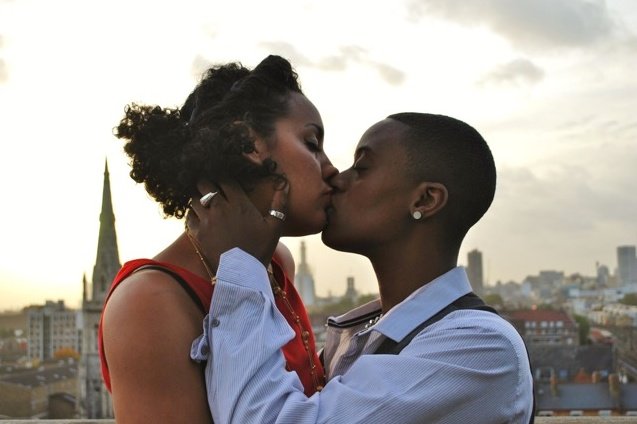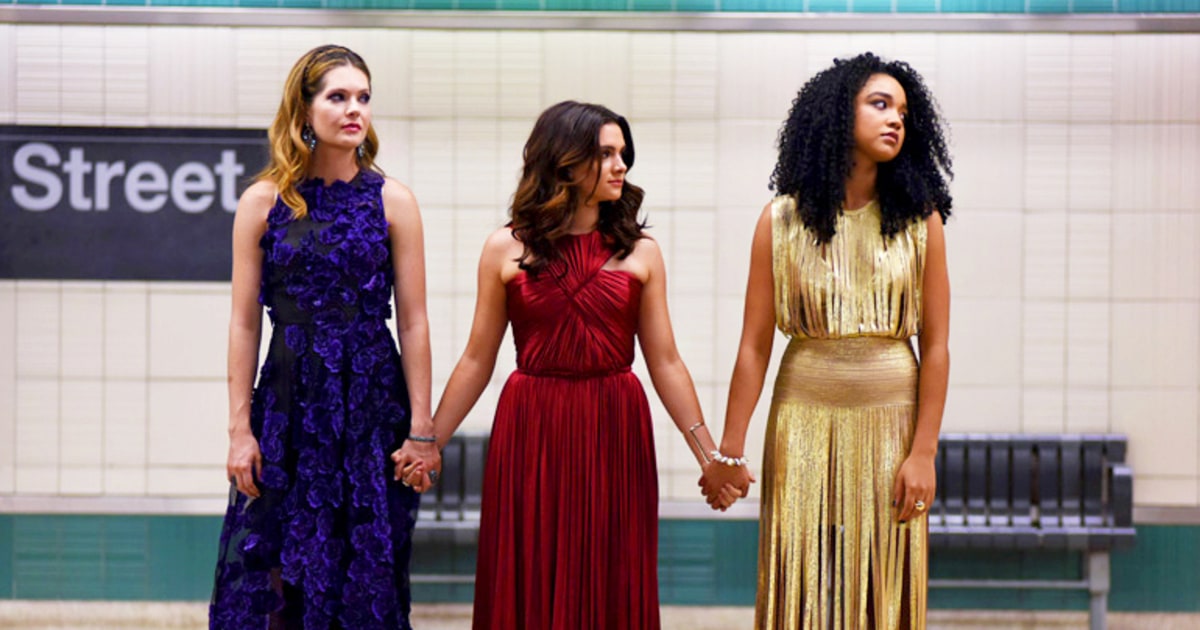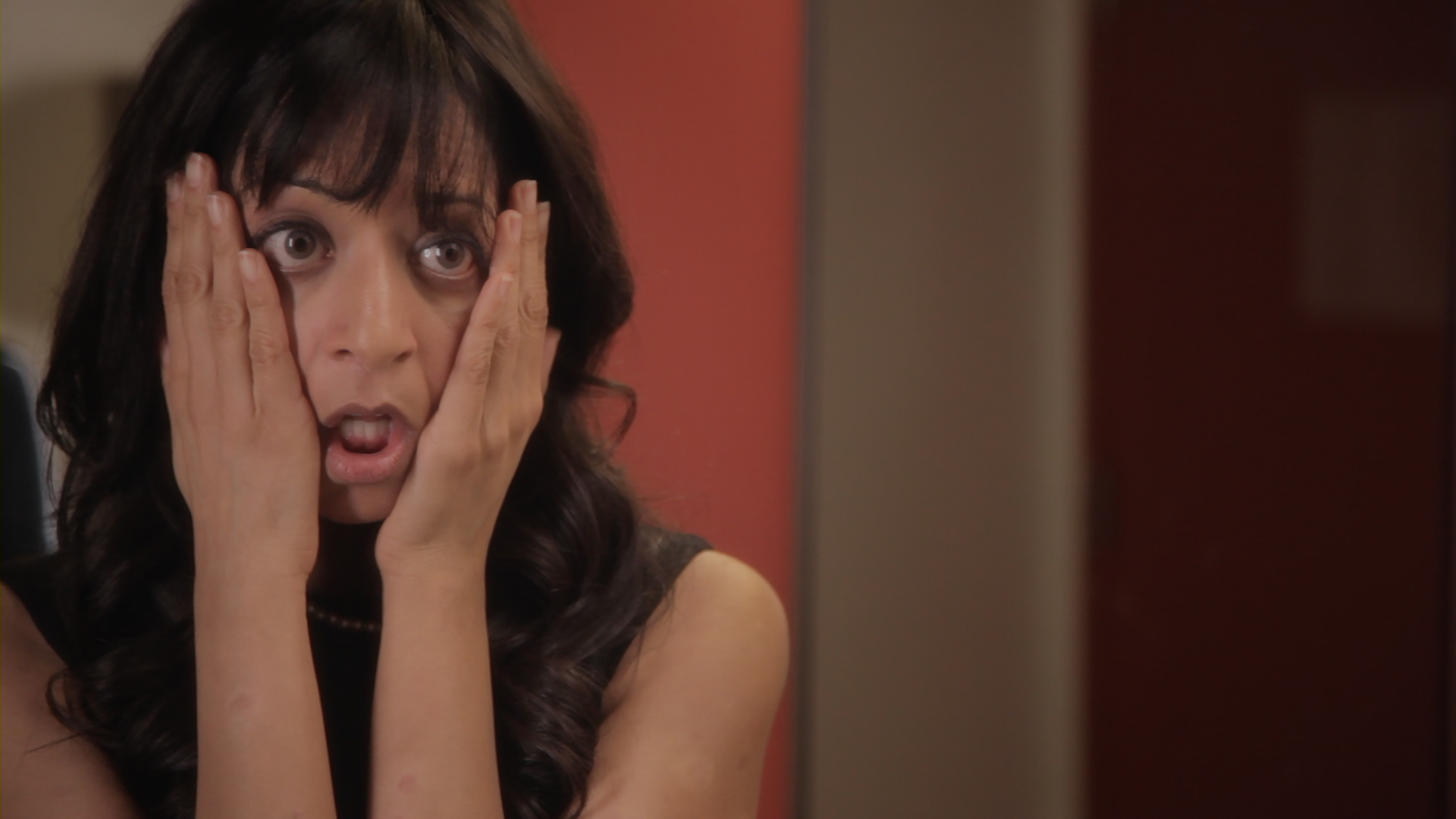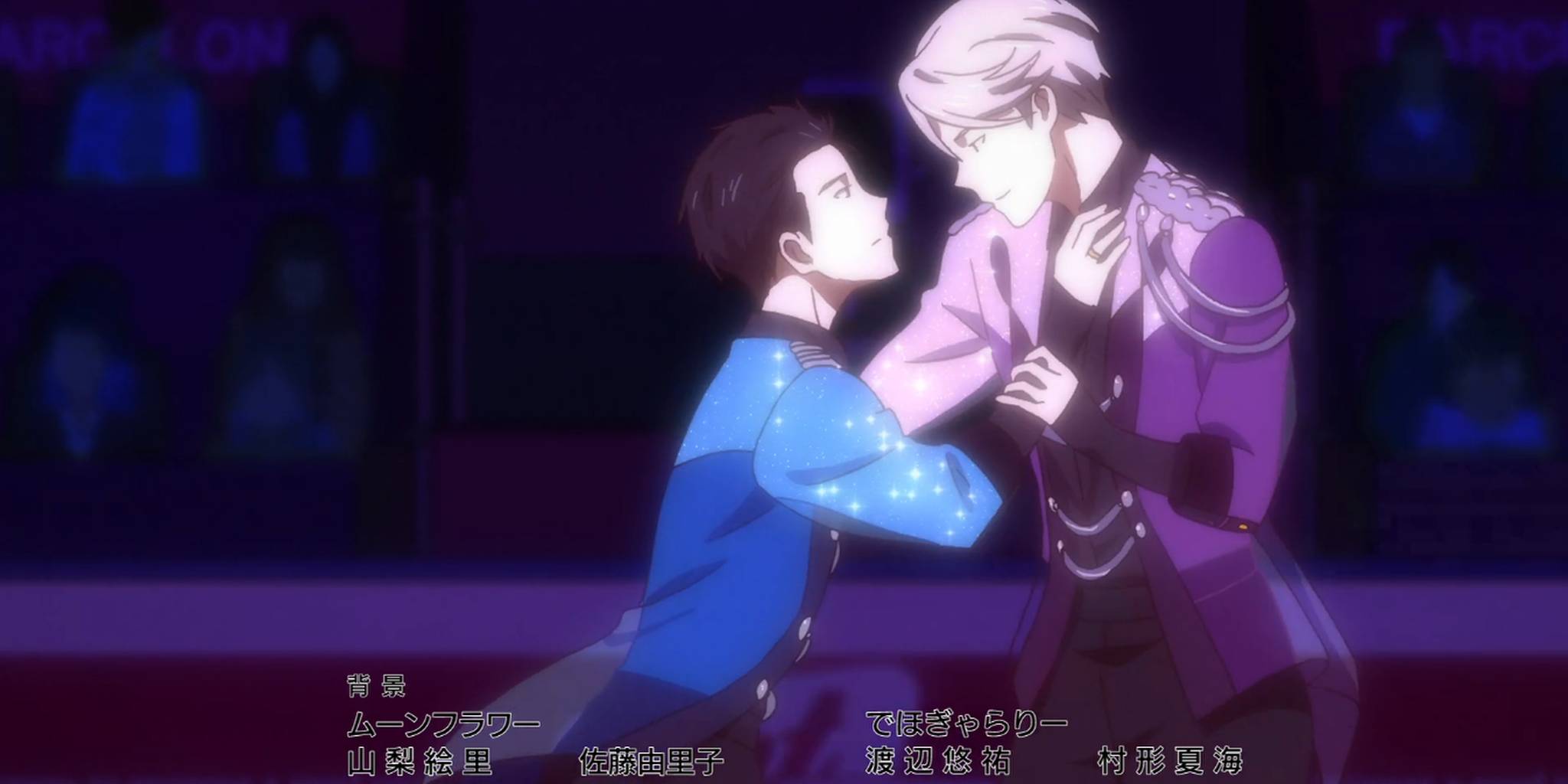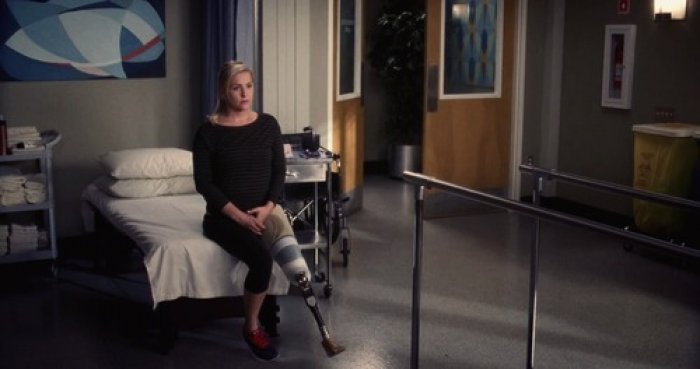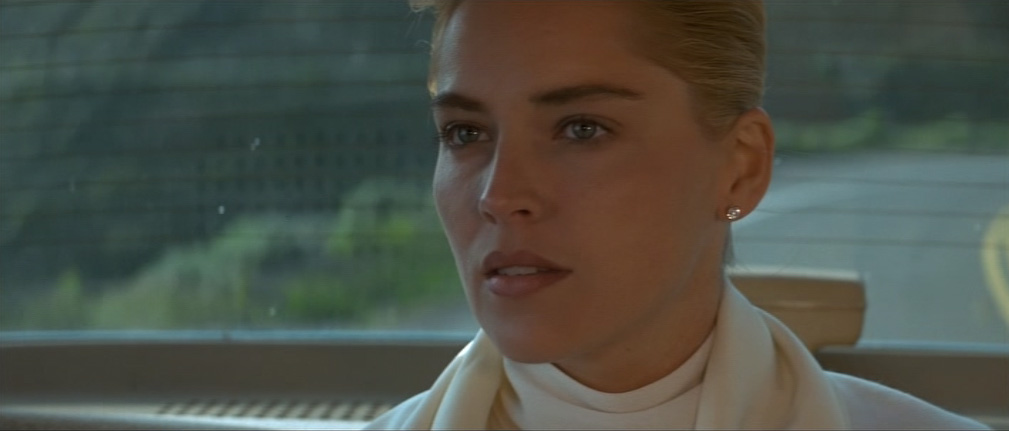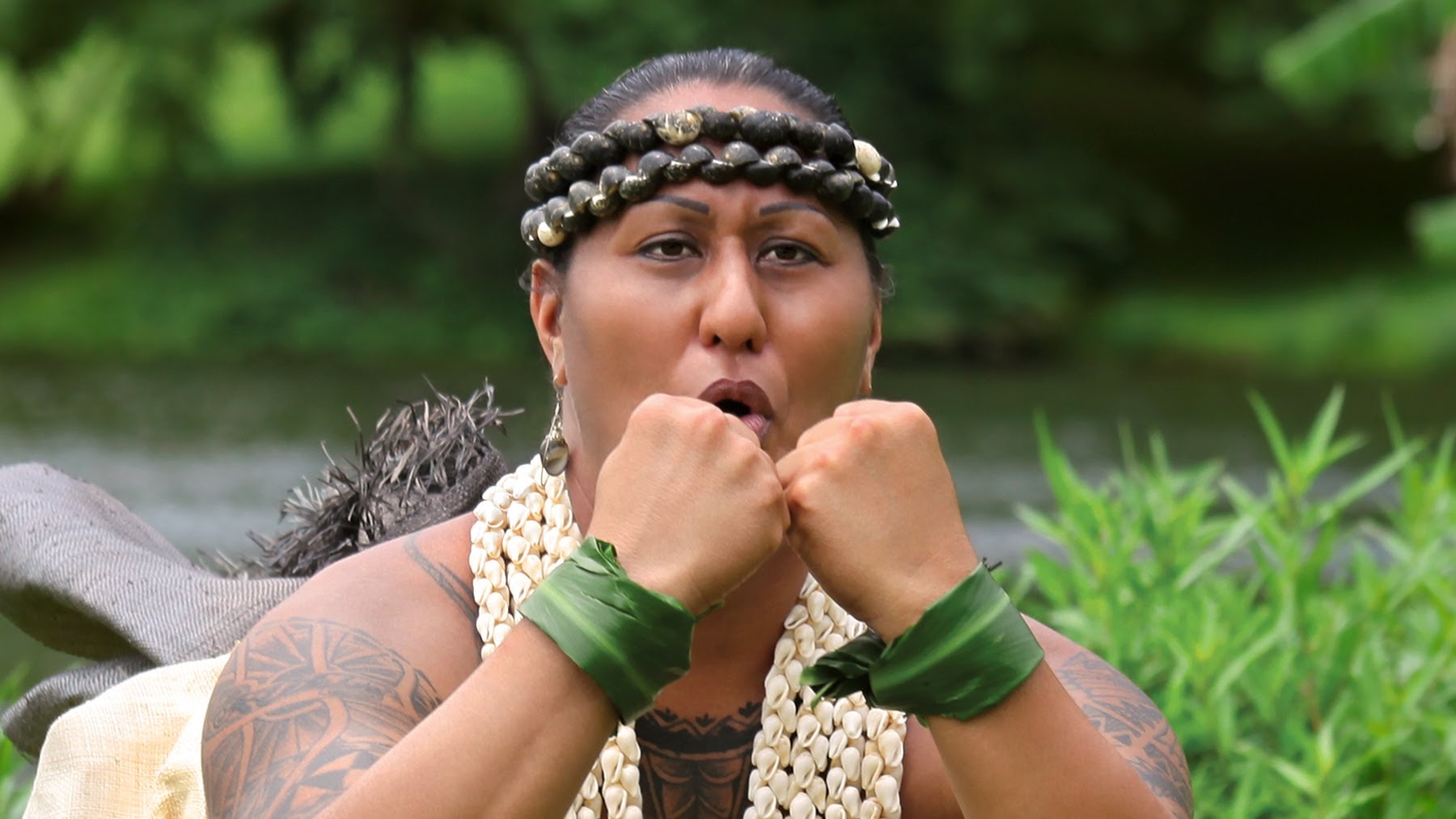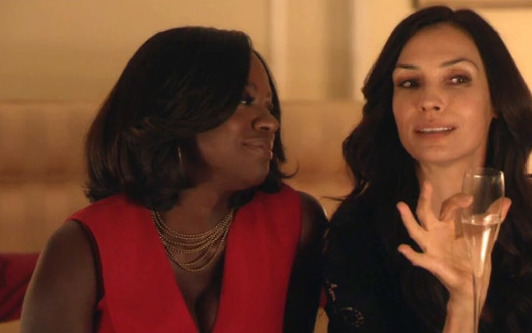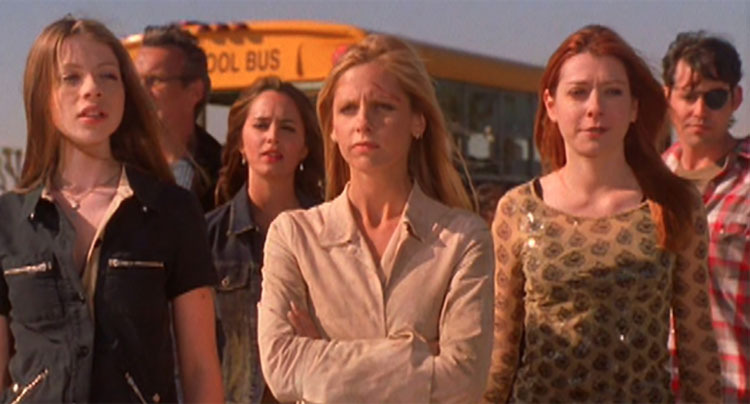
This guest post written by Lisa Ward appears as part of our theme week on Bisexual Representation.
When Buffy the Vampire Slayer first aired, it was considered to be a groundbreaking, feminist television show. Its nuanced portrayals of girls and women stood out in a genre where girls and women were generally portrayed as one-dimensional victims, not three-dimensional heroes (and villains). And for a generation of young people (myself included), this representation was vital and growing up with Buffy had a lasting positive impact on their lives.
However, from the perspective of intersectional feminist criticism, the series was far from unproblematic: its portrayals of people of color and in particular, women of color, were sparse, generally poorly handled, and all too often ended in untimely death; many of the underlying attitudes the show reinforced with regards to sexuality, in particular female sexuality, were deeply troubling; mental illness was portrayed in a very stigmatizing way (despite, in my opinion, Buffy (Sarah Michelle Gellar)’s Season 6 arc with depression being handled fairly well); and the show sends a very mixed message regarding its gay, lesbian, and bisexual characters.
It is this final topic — bisexuality and bisexual characters — that I want to explore. While bisexuality is also inclusive of people outside of the gender binary, I will be primarily using the term bisexual, rather than related terms, such as pansexual, as the Buffyverse does not seem to recognize the existence of more than two genders (except perhaps in its non-humanoid characters).
Willow Rosenberg
A piece on bisexuality in the Buffyverse cannot be written without discussing Willow Rosenberg.

There is a lot of debate from Buffy the Vampire Slayer fans on whether Willow (Alyson Hannigan)’s character counts as a triumphant case of lesbian representation (at least until Tara’s murder which fulfills the classic Bury Your Gays trope and facilitates Willow’s, admittedly temporary, jump into the Psycho Lesbian trope), a sad case of bisexual erasure, or a nuanced example of sexual fluidity. I can see merits in all of these arguments.
Willow was deeply attracted to and formed physical relationships with men before meeting Tara (Amber Benson) and coming out as a lesbian. Even after coming out, Willow goes on to make comments that imply an ongoing attraction to men as well as women — for example, she describes both Dracula (Rudolf Martin) and Giles (Anthony Head) as “sexy” during Season 4. And Willow’s vampire self, as seen in “Doppelgangland” is quite clearly openly bisexual, making sexual overtures towards both men and women (and her own alternate universe self, because she is a Depraved Bisexual trope – a trope Buffy the Vampire Slayer has a very damaging relationship with indeed). It is these plot points that tend to lead to accusations of bisexual erasure for the character of Willow Rosenberg.
However, as is rightly pointed out by those who disagree, there are several in-universe of Watsonian explanations available for these plot points. For example, sexual identity is about more than just sexual attraction. It is known that many people who identify as straight have had same-sex fantasies or experiences, and for some, do not see these fantasies or experiences as changing their fundamental heterosexual identity. The same can apply for those who identify as gay or lesbian. Being queer is strongly correlated with behavior and attraction (as well as self-identification), but not strictly defined by these things. This explanation allows us to interpret Willow as a nuanced portrayal of a lesbian woman, not an erased bisexual woman.
Another in-universe explanation for Willow’s characterization is that sexuality is fluid and sexual identity can change over time. It’s not unusual for someone to identify as straight throughout their teen years and come to realize that they are queer later in life. Willow Rosenberg could be a nuanced example of this true to life scenario. Not everyone realizes their sexuality as a teen or even a young adult, and sexual fluidity is a perfectly acceptable explanation for her character.
Personally, I like both of these in-universe explanations. Sexual identity is complex and nuanced; if we explore Willow’s character from a real-world perspective, then it’s perfectly acceptable to say that she provides a realistic representation of a complex lesbian woman who at one point in her life identified as straight.
However, when we explore the character of Willow through an out-of-universe or Doylist lens, looking at the Buffyverse as a whole and how the writers choose to represent bisexuality in other characters, the accusations of bi erasure in the case of Willow gain a lot of validity.
Bisexuality and Evil in the Buffyverse
From the outset, bisexuality is regularly associated with evil in the Buffyverse.
Often one of the key signifiers that a human has been turned into a vampire is sudden hypersexual — and frequently bisexual — behavior. This is particularly true for female vampires, who quite often fit the Depraved Bisexual archetype.

Some key examples include, of course, vampire Willow — who aggressively flirts with human Willow, including groping and licking, while maintaining her hypersexual relationship with vamp Xander (Nicholas Brendon) — and Angel (David Boreanaz) and Spike (James Marsters)’s lovers Darla (Julie Benz) and Drusilla (Juliet Landau) — who, in a flashback scene, are shown in their underwear discussing a shared sexual encounter followed by bathing together and implied oral sex.
For male vampires, this is less explicit — most likely due to taboos concerning sexual behavior between two men on-screen versus sexual behavior between two women. On-screen, male characters’ sexuality tends to become more overtly predatory towards women in order to signal their change from good (human) to evil (vamp), but nonetheless we also get allusions to off-screen bisexual behavior. For example, Spike confirms he and Angel have slept together saying, “Angelus and I were never intimate, unless you count that one time…” Angel expresses a mutual interest claiming, “I love the ladies, but lately I’ve been wondering what it would be like, to share the slaughter of innocents with another man. You don’t think that makes me some kind of a deviant do you?”
Other evil characters are often portrayed as both bisexual and/or hypersexual as shorthand for evil, bad, or wrong throughout the series. Some examples include: Glory (Clare Kramer) licking Tara’s hand before mind-raping her and flirting with Dawn (Michelle Trachtenberg) before bleeding her; Ethan Rayne (Robin Sachs)’s sexually charged dialogue with Giles (a relationship which writer/producer Jane Espenson confirmed did take place in their younger, “dark magic” days); Andrew (Tom Lenk)’s ambiguous attractions expressed towards men such as Warren (Adam Busch), Jonathan, and Spike, and women such as Buffy, Anya (Emma Caulfield), and a woman at a bar; and Forrest (Leonard Roberts)’s angry, possessive behavior towards Riley (Mark Blucas) and unreasonable jealousy of Buffy, even though he finds her “so hot.”
But the clearest example of the Buffyverse’s discomfort with bisexuality, in my opinion, appears in the character of Faith Lehane.
Faith Lehane
Despite never actually being referred to as bisexual or sharing any openly sexual moments with any women on-screen, many Buffy the Vampire Slayer fans consider Faith (Eliza Dushku) to be a bisexual woman who falls in unrequited love with Buffy. Personally, I think there is subtext in the television series that supports this view (and writer/producer Jane Espenson, writer/producer Doug Petrie, creator Joss Whedon, and actor Eliza Dushku all agree); this qualifies as both queerbaiting and bisexual erasure, all while playing into the Depraved Bisexual and Psycho Lesbian tropes.

Faith is, in the words of Andrew, “the dark slayer” and is supposed to represent a counterpart to Buffy’s lighter, more conservative nature. This means that, unlike Buffy, she is overtly sexual and open about her desires — and later, after her switch to the dark side, she becomes unacceptably sexually predatory.
When she first appears, it seems like Faith’s approach to sexuality might be positive – in fact, Faith’s pronouncement that slaying always makes her hungry and horny results in the other characters covertly shaming Buffy for being so repressed when she claims in return that sometimes slaying makes her “crave a non-fat yogurt afterwards.” However, as the series progresses, it’s made clear that Faith is a bad influence, and by the time she joins the forces of evil, Faith is slut-shamed by the main characters on a regular basis.
When Faith and Buffy first meet, there is a lot of tension between them, with Buffy in particular feeling threatened by Faith. But as their relationship progresses, this tension moves from rivalry into something more romantic in nature.
All of this culminates in what I would describe as the three key points in Faith’s character arc: Season 3’s “Bad Girls,” Season 4’s “Yesterday’s Girl / Who Are You,” and Season 7’s “Dirty Girls.”

In “Bad Girls” (an episode title that tells us a lot about the show’s attitude to Faith’s “deviant behavior”), the chemistry between Buffy and Faith reaches its climax. Faith is set up as “seducing” Buffy into her way of thinking and, despite herself, Buffy responds. The sexual tension between them is sizzling… until everything goes wrong, of course. Faith accidentally kills a man and doesn’t trust Buffy to protect her from the harsh punishment she knows will follow. Thus begins Faith’s descent into evil.
After this, Faith and Buffy behave more like scorned exes than nemeses (“Is that how you say the word?”) until their final showdown (which mirrors the previous season’s showdown with ex-turned-evil, Angel) where Buffy puts Faith in a coma.
Faith awakens from her coma in Season 4’s “Yesterday’s Girl / Who Are You,” and again, acts like a scorned lover when she finds out Buffy has “moved on” from her, grabbing her chance to finally possess Buffy, quite literally, by stealing her body using a body-swap spell. However, she discovers that even total possession of Buffy cannot heal the pain of her rejection. Faith leaves at the end of this episode to seek redemption and does not return to Buffy the Vampire Slayer (although she does appear on Angel) until Season 7’s “Dirty Girls” (another interesting name choice for an episode focused on the return of Faith).
In “Dirty Girls,” we meet a reformed Faith, whose new-found maturity is almost immediately tested by a barb to her sorest spot – another rejection from Buffy, who failed to warn her that there’s a new evil afoot that specifically targets slayers. But Faith rises above and we start to believe that perhaps she has managed to move on. We even get to see her turn down an opportunity that the old Faith would never have been able to resist – a chance to try to seduce Buffy’s love interest (Spike). The audience gets to marvel at reformed Faith’s growth and maturity as a character, that is, until she utters this seemingly throwaway line, “I just spent a good stretch of time locked away with a mess of female-types. Kinda had my fill.”
The unfortunate implication becomes that Faith has quite literally “straightened out.” Faith no longer has “deviant” bisexual urges; Faith is no longer a “dirty girl”; Faith has reformed.
Conclusion
Despite what was at the time a groundbreaking portrayal of a loving lesbian relationship, Buffy the Vampire Slayer still had many issues in its messaging surrounding queer sexualities, in particular bisexuality. In my opinion, a few material changes could have gone a long way in removing at least some of this negative messaging.
The first crucial step would have been to remove the show’s tendency to use bisexuality as a shorthand for evil. The second step would have been to introduce some positive examples of bisexual people who fight on the side of good – here, the idea of Willow’s character identifying as bisexual (while Tara and Kennedy still identify as exclusively lesbian) feels like a hugely missed opportunity. However, this character wouldn’t necessarily have to be Willow. There were plenty of opportunities for other bisexual characters, male and female, within the show’s seven season run. And finally, bringing Faith’s sexuality and unrequited love arc from subtext to text, with the proviso that when she reforms, it’s not because she’s no longer bisexual, would work well, provided it wasn’t set to a backdrop that codes bisexuality as depraved. With better representation of bisexuality in the Buffyverse generally, Faith’s arc would be the story of an individual who happens to be bisexual, not a classic Depraved Bisexual stereotype.
See also at Bitch Flicks:
Is Buffy the Vampire Slayer‘s Willow Rosenberg a Lesbian or Bisexual?
Exploring Bisexual Tension in Buffy the Vampire Slayer
Buffy the Vampire Slayer: Joss Whedon’s Binary Excludes Bisexuality
Buffy the Vampire Slayer: Willow Rosenberg: Geek, Interrupted
Buffy the Vampire Slayer and the Humanization of the Superheroine
Lisa Ward is a Faith fangirl who works in PR, writes songs, and lives on a wind-blasted island in the North Sea. You can follow her on Facebook, Twitter, Instagram and a bunch of other places she’s probably forgotten about as @sheltielisa.
